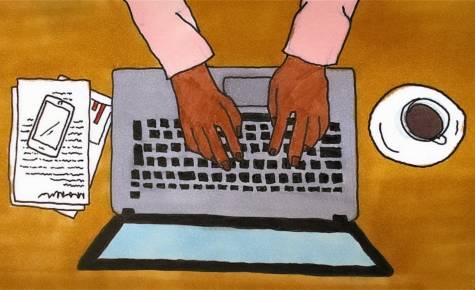Rape Culture in ‘The Other Boleyn Girl’
October 7, 2015
In the movie “The Other Boleyn Girl,” released in 2008 and set in 16th century England, both the content and the depiction romanticize and beautify what is essentially an endorsement of the behavior of chauvinistic kings.
In the movie, the two Boleyn sisters, played by Natalie Portman and Scarlett Johansson, compete for the position of mistress for King Henry VIII. Anne Boleyn, the elder sister, was intended to be the mistress to the already-married king, but it is Mary Boleyn, the younger sister, that earns the kings favor. This sparked a sister rivalry like none other.
On Mary’s first day at court, the king called her to his chambers. And then, in the twenty minutes that Mary was there, she and the king fell in love.
This romantic notion that they fall in love is intended to deter the viewer from the reality that she was prostituted to the king’s whims. There was no consent.
In one night of unconsensual sex, they fell in love. This romanticized depiction only perpetuates rape culture.
We can’t go back in time and change that era, but we can change how movies present this material to us. There should have been nothing romantic about being summoned against your will to satisfy another’s sexual appetite. The content of the movie isn’t the issue, it is how it is portrayed that promotes a problem. By glamorizing the plot with costumes and big name actors, while glossing over the more serious issues present in the film, leaves the viewer less aware of how problematic rape culture is.
And this wasn’t the only rape-culture-perpetuating scene; eventually, Anne Boleyn manipulates her way into the king’s favor. And the king raped her, but nothing was done about it. Anne didn’t report him, run from him, or fear him. The very next scene is Anne and King Henry getting married. In fact, nothing is said about the crime again. It becomes unspoken, forgotten about. The problem with this is that these issues should never be silenced, should never be swept under the rug.








Chris • Apr 13, 2022 at 8:14 pm
Yes to all of what you’ve written. I put the movie on and was shocked at how the story was Presented. Thank you for this perspective.
Callie • Jul 31, 2018 at 11:24 pm
My god, are you serious? Quit whining if you want things like rape culture to be resoected. Youre grasping at straws here
johnny webb • Feb 4, 2016 at 3:55 am
in their time the bible was law, and i am sure fifty pieces of silver wasnt a problem for him.